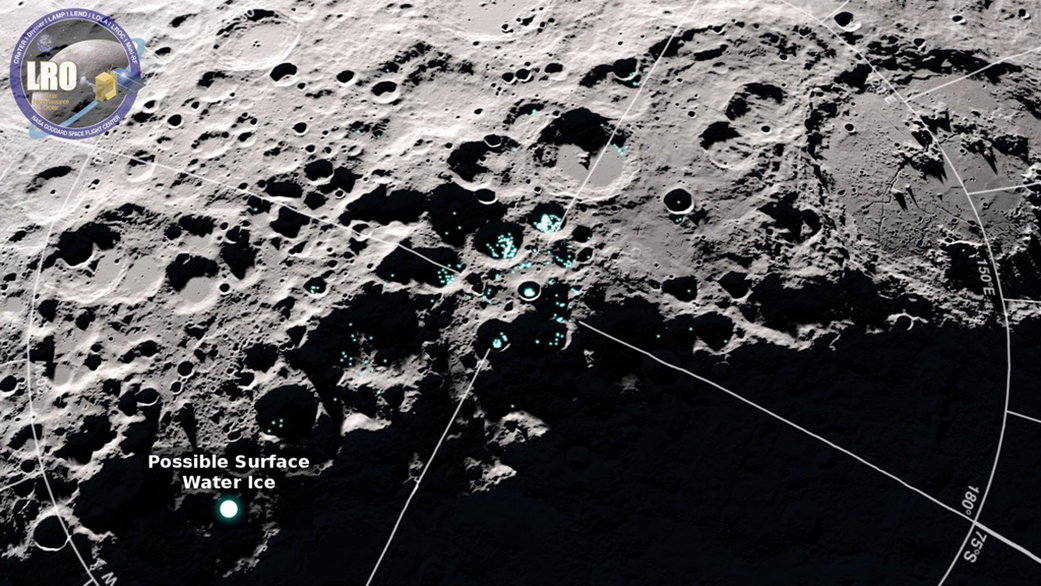Water Molecules Bounce Around the Moon. Here's Why.

When the clock strikes lunar noon, water molecules begin to dance around on the light side of the moon.
As the moon's surface heats up, water molecules detach and find another, cooler spot to hang out until temperatures cool back down, scientists found using data from NASA's Lunar Reconnaissance orbiter (LRO), which has been circling the moon since 2009.
Water on the surface of the moon exists mainly in two forms: frozen as stretches of ice always shrouded in darkness near the poles and as water molecules scattered across the surface bound to grains in the regolith or soil of the moon, according to a statement. [See Spectacular Lunar Mission Images in 3D (Photos)]
Aboard the LRO is a UV spectrograph, an instrument that measures UV light (from the sun) that's reflected off the surface of the moon. By splitting the reflected UV light into different wavelengths, the instrument creates a "spectrum" of light that differs based on the kind of material the light hits first. When water is present, the instrument detects a different spectrum of light than when it's not.
During the day, the surface of the moon heats up with peak temperatures at around noon on the moon. As a result, the water molecules detach from the regolith, become gaseous and migrate to colder areas where they are more stable — both to nearby, colder regions on the surface and up into the thin atmosphere. Later in the day, as temperatures drop again, the molecules come back and reattach to the surface regolith. The team found that this was mostly true in more hilly regions called the moon's highlands.
What's more, the data from the LRO poked a hole in a theory about how water molecules arrived at the moon in the first place. One idea is that hydrogen ions rain onto the moon from incoming solar winds and interact with the oxygen from iron oxide in the regolith, forming water molecules, or H2O.
But if that's the case, when the moon is shielded from solar winds — when it rotates such that Earth directly blocks the wind — the quantity of that water should decrease. They found that even when the moon was shielded, the quantity of water molecules didn't change. This suggests that lunar water builds up over time and doesn't directly come from solar wind, according to the statement.
Get the world’s most fascinating discoveries delivered straight to your inbox.
However, they can't rule out the possibility that what they're detecting with their spectrograph is indeed water and not a similar wavelength from a one-hydrogen-less molecule called hydrogen oxide, they reported in their new study, published March 8 in the journal Geophysical Research Letters.
"These results aid in understanding the lunar water cycle and will ultimately help us learn about accessibility of water that can be used by humans in future missions to the Moon," lead author Amanda Hendrix, a senior scientist at the Planetary Science Institute, said in the statement.
- Earth's Moon: Formation, Composition and Orbit
- 10 Things You Didn't Know About the Moon
- 10 Surprising Moon Facts
Originally published on Live Science.

Yasemin is a staff writer at Live Science, covering health, neuroscience and biology. Her work has appeared in Scientific American, Science and the San Jose Mercury News. She has a bachelor's degree in biomedical engineering from the University of Connecticut and a graduate certificate in science communication from the University of California, Santa Cruz.


